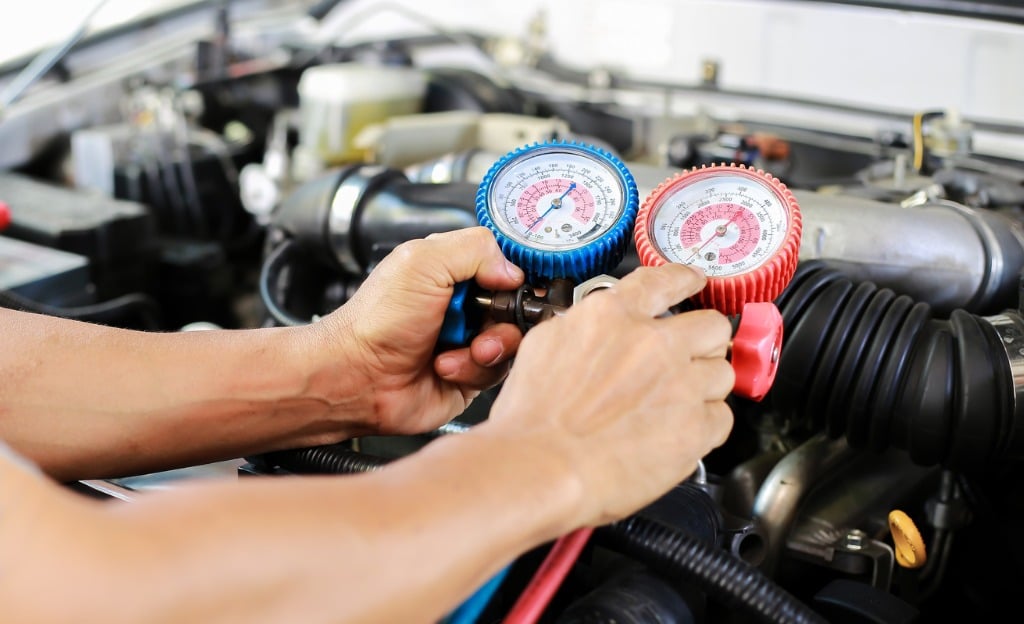Homeowners and office managers are starting to experience spot refrigerant shortages and increased refrigerant costs. These shortages and price increases have been the culmination of a refrigerant transitioning process occurring over the last 30 years due to environmental concerns.
Damage to the Ozone Layer
The original class of refrigerants was CFCs (chlorofluorocarbons). They were some of the most stable chemicals ever developed. The most common CFC refrigerants were R-12, R-11, R-500, and R-502.
In addition to refrigerant usage, R-11 was used as a foam-blowing agent and an aerosol propellant. Another CFC was Halon, which was used in fire suppression equipment.
In the 1980s, scientists found that these stable chemicals could travel to the upper atmosphere, where their chlorine molecules destroyed the ozone layer. One example of the stability of CFCs is that R-12 can remain stable in the upper atmosphere for up to 144 years causing continuous ozone damage.
The ozone layer is critical to filtering out most of the ultraviolet rays from the sun. Increased ultraviolet rays entering our world can create significant changes to our environment. Reduced plankton in the seas, increased animal blindness, and increased cases of skin cancers, such as melanoma, are just some of the problems this increase can cause.
In 1987, a global environmental treaty was signed in Montréal, Canada, which became known as the Montréal Protocol. It recommended phasing out the CFCs and reducing the intentional release of all ozone-depleting refrigerants into the environment.
The U.S. met its treaty obligations when President George H.W. Bush signed the Clean Air Act in 1992. This act put phase-out timelines on the CFCs, regulated the industry requiring EPA certification, penalized the intentional venting of ozone-depleting refrigerants, and created certified refrigerant reclaim processes to reclaim and reuse refrigerants.
The manufacture of new CFC refrigerants was wholly phased out by 1996. All CFC refrigerants purchased since then are reclaimed refrigerants.
The Montréal Protocol was amended several times, along with U.S. laws, which added other chlorine-based HCFC (hydrochlorofluorocarbon) refrigerants. One HCFC is R-22, which had been the most widely used refrigerant in the U.S.
While new HVAC equipment designed around HCFCs could not be manufactured in the U.S. after 2010, new HCFC production was completely phased out by 2020. Thus, all R-22 refrigerant sold today is reclaimed refrigerant.
Since only reclaimed R-22 is sold today and there is still a large installed base of R-22 systems in homes and commercial buildings, spot shortages and prices increases are becoming more prevalent.
Impact on Businesses
Refrigerant leakage can result in costly refrigerant replacement costs and can affect HVAC equipment efficiency and reliability. That is why it is more important than ever to have a preventive maintenance program to catch problems before they get more costly.
If a business has not already done so, they should create a budget plan to replace their HVAC equipment with more efficient equipment that uses a newer refrigerant, such as R-410a.
R-410a
For many years now, the HVAC industry has designed the type of equipment that used R-22 around the new refrigerant R-410a. Due to refrigerant operating differences, older R-22-based equipment cannot work with R-410a.
The manufacturers have used this refrigerant transition opportunity to design much more energy-efficient systems, which is additional motivation to replace air conditioning systems. With R-22 supplies constantly dwindling, more homeowners and businesses are converting to the new coolant, which has produced a significant spike in demand.
One of the primary suppliers of the base products used to make R-410a and other fluorocarbon refrigerants is China. The fluorspar mineral and refrigerant R-125 are critical components in many fluorocarbon refrigerants such as R-410a. Due to increased demand and the current supply chain issues, R-410a is experiencing shortages.
Refrigerant availability issues and costs usually peak in the summer, so having your cooling system serviced in the spring or fall can identify repairs when the refrigerant costs are more tolerable.
Comprehensive HVAC Services from Design Mechanical
Design Mechanical is one of the premier mechanical service and commercial HVAC repair companies in the Kansas City area. If your business’s air conditioner is experiencing issues, or you want to have it checked for leaks, you can count on us to get the job done in a reliable and timely manner.
In addition to HVAC-related services, we also offer design and construction, refrigeration, and sheet metal services. Give us a call at (913) 281-7200 if you require any of our services!

